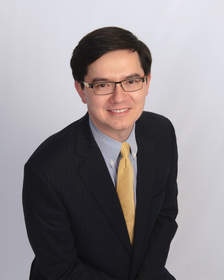PITTSBURGH, PA--(Marketwired - Apr 19, 2016) - Recent statistics from the American Society for Aesthetic Plastic Surgery confirm that injectable treatments derived from botulinum toxin, including options such as BOTOX® Cosmetic and Dysport®, are the most popular non-surgical aesthetic enhancement procedures in the U.S. In fact, ASAPS found that more than four million of these treatments were performed in 2015 alone. Dr. Paul Leong, a facial plastic surgeon in Pittsburgh, says these two treatments are among the most requested non-surgical procedures at his practice. And since both injectables are composed of similar properties and offer similar results, he notes that patients considering the treatments often ask: "What exactly are the differences?"
First, Dr. Leong explains, it's important to understand what these injectable treatments are designed to do. Both BOTOX® Cosmetic and Dysport® are composed of a form of botulinum toxin. The solution makes it possible to temporarily prevent muscles in specific areas of the face from contracting and causing wrinkles to form. BOTOX® Cosmetic or Dysport® injections can be used to reduce the appearance of crow's feet, frown lines, forehead creases, lines between the eyebrows, wrinkles above the lips and alongside of the nose, and other common signs of age. Dr. Leong says the treatments typically only take about 15 minutes to perform, and the optimal results should be noticeable within days. He adds that most patients are able to resume normal daily routines immediately.
Dr. Leong notes that there are an extraordinary amount of similarities between the two treatments. One of the differences is that one of the treatments seems to become effective faster than the other. Because of the unique protein structure of each injectable treatment, Dr. Leong says Dysport® may provide more noticeable results for some patients in a quicker period of time -- after about 24 hours in certain cases -- when compared to BOTOX® Cosmetic. Having said that, Dr. Leong finds that he rarely encounters patients that care very much if the effects of their treatment set in a little sooner. From time to time, patients report they feel they have gotten a "better" result with one treatment or another, perhaps a longer result or a superior cosmetic outcome. Dr. Leong suspects that these perceived differences are more likely from injector variability during the patient's prior experiences, rather than the intrinsic characteristics of the two treatments. Given the great similarity of the treatments, Dr. Leong is content to allow patients to make their own selection. This is in contrast to choosing particular dermal fillers to use in specific areas of the face. In this case, Dr. Leong feels that there are very significant differences, and this often drives his recommendations as to which filler should be used in which areas of the face.
All in all, Dr. Leong says the two treatments are more similar than they are different, and the best option ultimately depends on each individual's unique needs, goals, and to some degree, their preconceived notions. He advises women and men who are considering injectable treatment, or any other type of facial aesthetic enhancement procedure, to consult with a board-certified facial plastic surgeon or plastic surgeon who can create a customized treatment plan designed to maximize their results.
About Paul L. Leong, MD
Certified by the American Board of Facial Plastic and Reconstructive Surgery, Dr. Paul Leong received his medical degree from the Yale University School of Medicine. He later completed an internship in General Surgery at the University of Pittsburgh Medical Center, followed by a residency in Otolaryngology (head and neck surgery) at that same institution. Dr. Leong completed a Fellowship in Advanced Head and Neck Surgical Oncology at the University of Pittsburgh Medical Center and a Fellowship in Facial Plastic and Reconstructive Surgery at Oregon Health Sciences University. He is a member of the American Academy of Facial Plastic and Reconstructive Surgery. In addition to cosmetic injectable treatments, Dr. Leong's practice, Sistine Plastic Surgery, provides a wide array of facial plastic surgery and non-surgical aesthetic enhancement options, including facelift, laser skin resurfacing, and KYBELLA® double chin reduction procedures. Dr. Leong is available for interview upon request.
For more information about Dr. Leong, Sistine Plastic Surgery, and available treatments, please visit sistineplasticsurgery.com and facebook.com/sistineplasticsurgery.
To view the original source of this press release, click here:
https://www.sistineplasticsurgery.com/latest-news/botox-cosmetic-and-dysport-pittsburgh-facial-plastic-surgeon-explains-the-differences
Contact Information:
Sistine Plastic Surgery
Sewickley:
409 Broad St.
Suite 101B
Sewickley, PA 15143
SouthSide Works:
2643 E. Carson St.
Pittsburgh, PA 15203
Greensburg:
510 Pellis Rd
# 101
Greensburg, PA 15601
Wexford:
1000 Stonewood Dr.
Suite 200
Wexford, PA 15090
Mt. Lebanon:
St. Clair Hospital
1050 Bower Hill Road
Suite 308
Pittsburgh, PA 15243
(412) 621-3223
